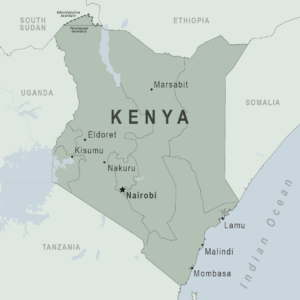Strengthening Early Childhood Development (ECD) Delivery in Kenyan Counties
The early years in a child’s life, from 0 to 5 years (in Kenya that is 6.7 million or 14% of the population), are the most important time for supporting holistic development and preparing the child for future success in life. It is therefore important to allocate resources to support the health and learning of young children.
Investing in Early Childhood Development (ECD) has strong dividends to individuals, communities, and national economies through improved livelihoods, workforce participation, and GDP growth. ECD is a cross cutting area encompassing health, education, social protection, nutrition and caregiving. To reach their full potential, children require these five interrelated components.
Every dollar invested in high-quality early childhood development (ECD) yields between four to nine dollars in economic returns over the long term[1]
Despite this demonstrated return, across the globe, there is significant under-investment in ECD particularly relative to investment in other stages of human development. Between 2012 and 2014 global investment in early childhood or education grew by US$56 million while investment in secondary education grew by US$515 million.[2] Often, deployment of resources is channeled towards higher education and post-school workplace readiness. However, interventions at this stage are sometimes “too little too late” and have limited scale potential as they can only be used for the benefit of those who are lucky enough to have successfully gone through the school system. There is a need to address early education to ensure that first, more people have access to schools, and second that a solid foundation for future learning and growth has been laid down. The picture is similar in Sub Saharan Africa where less than 2% of government expenditure is allocated to ECD.
In Kenya, the national government allocates resources for early learning and pre-primary programmes with the 47 counties deciding how to spend the funds
 The responsibility to deliver quality ECD services is devolved to the 47 counties with each county tasked with designing, planning, funding and delivering these services. The National Government retains policy setting and regulation for ECD services. There are over 10.9 million children under the age of 8 in Kenya, and the definition of ECD for counties targets children aged 0-5 years (inclusive), who number 6.7 million countrywide. Currently, counties receive lump sum funding from the National Government with no comprehensive guidelines for budgeting to enable proper planning and costing for ECD needs. Not only is there variation in the standards and implementation of ECD policy across the different counties but ECD is generally underfunded. Further, there is a bias towards capital expenditure items including physical infrastructure with operating expenditure such as teacher training and quality assurance neglected.
The responsibility to deliver quality ECD services is devolved to the 47 counties with each county tasked with designing, planning, funding and delivering these services. The National Government retains policy setting and regulation for ECD services. There are over 10.9 million children under the age of 8 in Kenya, and the definition of ECD for counties targets children aged 0-5 years (inclusive), who number 6.7 million countrywide. Currently, counties receive lump sum funding from the National Government with no comprehensive guidelines for budgeting to enable proper planning and costing for ECD needs. Not only is there variation in the standards and implementation of ECD policy across the different counties but ECD is generally underfunded. Further, there is a bias towards capital expenditure items including physical infrastructure with operating expenditure such as teacher training and quality assurance neglected.
Limited data continues to hinder analysis of ECD spending challenges and solutions
To assess the commitment of county governments to ECD, ECD expenditure was evaluated against county budgets from June 2014 to June 2020. In the last 6 fiscal years, counties have on average allocated between 9.1% of their county budgets towards ECD. However, the ECD expenditure provided can best be viewed as a proxy as the data is combined with several other sectors such as ICT, Youth Affairs, and Sports & Social Services making it difficult to ascertain exact expenditure on ECD alone. UNICEF recommends that governments at least spend 10% of their budget on education.

“ECD is underfunded as its benefits largely accumulate in the future, putting it at a disadvantage in budget discussions involving trade-offs with other sectors that offer more immediate economic and political payoffs.”
– UNICEF global resource guide on public finance for children in Early Childhood Development, Partners Edition, UNICEF 2020
To address this, the Global Development Incubator (GDI) through its ECD Capacity Building initiative is focusing on enhancing the ability and effectiveness of county level policy implementation and decision making by providing targeted technical assistance and training for county level officials with an aim of shifting the delivery of ECD services. In partnership with Early Childhood Network for Kenya (ECDNek), the initiative will test and implement interventions that improve county expenditure prioritization and allocation as well as data sharing with the overall goal of improving ECD outcomes for children in Kenya. We are inviting further engagement from other ecosystem players as we embark on this initiative.
In order to get good outcomes for children, it is important to have a better understanding of what is currently being spent on ECD interventions, what high-quality interventions cost and what outcomes these interventions can produce. Once these are determined and implemented, the learnings can be replicated in other countries.
This article was written by Eva Masinde and Wadzi Katsidzira, Program Leads for the ECD Capacity Building Initiative.
[1] https://www.impact.upenn.edu/early-childhood-toolkit/why-invest/what-is-the-return-on-investment/

